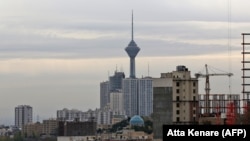The latest figures released by the Central Bank of Iran (CBI) in early November, puts the rise in real estate prices between October 2018 and the same month last year at 83.5 percent.
The CBI says house prices in Tehran are now based on the benchmark of 86,100,000 rials per square meter of built-in area. This amounts to around $575 per sqm or $52 per square foot at the open market exchange rate, which is more relevant in this case since sellers cannot get cheap dollars based on the government rate.
The average house price per square meter in Tehran during the past seven months, when Iran's economic crisis was at its worst, had a 55.5 percent rise in comparison with the similar period last year, the CBI reported.
As in previous CBI reports about real estate, the price increase has coincided with a huge drop in transactions. In Tehran, the Iranian capital sales were down by more than 32 percent over the past month, as an indication of continued recession in this sector.
The reason for this odd situation of less sales but higher prices is the devaluation of the Iranian currency. Many Iranians now think of the price of a house, and effectively everything else, in terms of U.S. dollars. Those few who can invest in real estate in the midst of an economic crisis, real estate is the safest bet and for those willing to sell, the price has to be higher to account for at least part of the currency devaluation.
Every U.S. dollar was traded for around 30,000 rials in February. In November, the rate of exchange has risen to 150,000 rials per dollar.
At the same time, average rental fees in urban areas in Iran grew by 12.6 percent over the past month in comparison with the similar period in previous year. In Tehran, the rise in rents over the same period was 15 percent.
However, rising prices are not limited to the housing market. According to the Iranian Statistical Center, the highest rising price during October was that of tomato paste, which grew by 227.8 percent in comparison to October 2017.
The unusual rise in tomato paste price in Iran has been attributed to a growth in Iranian tomato exports particularly to Russia.
Imported banana with 186% rise, and tomato with over 147% rise in prices were the next hot commodities in the Iranian market after tomato paste.
The prices of milk and dairy products were also on the rise during recent weeks as a result of drought coupled with the rise in the cost of packaging. The dairy producers' association is yet to regulate the prices in the sector by the end of next week.
Meanwhile, the CBI report marked a 11.5 percent rise in the production cost of non- industrial manufactured goods compared to same time last year. The impact of this rise is expected to be noticed in the retail market within a few months.
According to the Central Bank the same figure also is an indication of the monthly rise in inflation rate. Iranian institutions such as the CBI and the statistical center usually announce an inflation rate far below the rates calculated by independent observers. Nevertheless, even the 11.5 percent rise in inflation rate compared to previous month is considered too high by any standard.
The highest production cost rise has been observed in the market for manufactured goods (industry sector) to surpass 82 percent, the Central Bank reported.
In the meantime, the dramatic rise in the rates of exchange during the past months has led to an unprecedented increase in the prices of imported goods, and domestic goods made with imported parts or material.
This, in turn, has led to a growth in inflation in the area of manufacturing.
The rise in monthly inflation rates for both consumers and producers indicates that price rises are likely to continue in Iran during the coming months.






